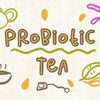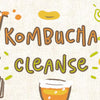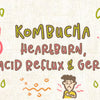Kombucha Leather: Your Guide To SCOBY Leather
SCOBY leather is a flexible biomaterial that’s made from a symbiotic culture of bacteria and yeast (SCOBY). A SCOBY grows thicker with each brew as the culture feeds on the dissolved sugar, polyphenols and other nutrients in the freshly brewed and sweetened tea.
Once the SCOBY achieves the desired size its harvested and treated just like traditional textile leather, this is followed by the drying process before being molded into shape. SCOBYs can be grown much more efficiently than leather, because it doesn’t rely on any animal products during production. Here at Grow You Pantry we grow our own SCOBYs! If you're interested in SCOBYs, or other kombucha accessories check out Our Store for the latest price.
How Is SCOBY Leather Different From Animal-Based Leather?

No Animals Are Harmed During Production - SCOBY leather is grown entirely from the cellulose film that’s produced by a bacteria and yeast culture, while animal-based leather requires animals to be slaughtered for their hyde. It’s not unusual for these animals to face extreme cruelty. Substituting animal leather with SCOBY leather will directly reduce the demand for such animal products and exploitation.
SCOBY Leather Production Is Eco-Friendly - SCOBY leather does not require chemical-based tanning unlike traditional leather which requires chemical tanning. These chemicals are not biodegradable and the tanning process emits effluent as well as toxic gases. The leather tanning process also requires vasts amounts of water and energy making it unsustainable. Often contaminated water from leather factories will be released into rivers, destroying ecosystems.
Cost Of Production - SCOBY leather only requires freshly sweetened tea to grow, making it considerably cheaper to produce than animal hyde. When brewing kombucha SCOBYs grow rapidly and also produce more SCOBYs too! In contrast animal products are resource intensive, consuming massive amounts of food, water and time.
SCOBY Leather Is Biodegradable - When it comes to disposing of SCOBY leather products you can compost them, they’re 100% biodegradable. Their environmental impact is very minimal and short lived. On the other hand, animal-based leather products take long to decompose and the process will release some of the chemicals trapped within the leather from the tanning process, which can leach into the Earth.
SCOBY Leather Is Extremely Versatile - SCOBY leather can be produced in any shape. SCOBY leather also doesn’t require to be sewed together as the pieces will glue stick together and dry as one. Animal leather is not nearly as versatile, you’re not only bound by the constraints of the animal but also the skill of the craftsman to sew and mold into shape.
SCOBY Leather Products
Clothes
SCOBY leather can be fashioned into clothing by laying it on a mold while still wet and allowing it to dry. The SCOBY leather should be dyed the desired color before drying. Similarly to traditional leather, a SCOBY can be used to make jackets, skirts and hats too!
Shoes
SCOBY leather is soft even when dry, making it perfect for making shoes. SCOBY leather shoes do require tanning and waterproofing treatment to increase their durability especially in wet conditions. These are not any different from animal-based leather shoes and in fact offer more comfort due to the much softer texture.
Wallets
SCOBY leather can be used to craft wallets and handbags as well. The wet and dyed SCOBY leather gets cut into the required sizes and placed on a mold where the pieces naturally seal together during the drying process. The resulting products are high quality and environmentally friendly without and can even be embossed if required.
How Does SCOBY Leather Compare To Leather?

Durability - Animal-based leather is more durable compared to SCOBY leather due to the fact that it has stronger bonds. Whereas SCOBY leather, without treatment is not waterproof and could breakdown a lot easier.
Quality - Animal-based leather is of higher quality, and physically more robust than SCOBY leather. Animal leather can also withstand extreme heat while SCOBY leather cannot as it is made from cellulose which degrades much faster when exposed to excessive heat.
Waterproof - Animal-based leather is considered to be fully waterproof, while SCOBY leather has to undergo a special treatment to make it waterproof. This process reduces the biodegradability of SCOBY leather as it relies on some strong chemicals such as sealants.
SCOBY Leather Production
Equipment required
-
Rubber gloves- 1 pair
-
Spray bottle with rubbing alcohol
-
Duct tape
-
Seedling heat mat
-
Non-porous container with lid
-
Tightly woven cloth patch or medical gauze
-
Measuring cup
-
Wooden board or any other absorbent board to dry the leather on
Ingredients required
-
1 SCOBY mother
-
200 ml raw kombucha from a previous brew to be used as a starter tea
-
200 g white sugar
-
2 l freshwater- unchlorinated
-
2 black tea bags
-
Water-based dye
Instructions
1. In a large pot bring the water and tea leaves to boil and steep for 15 minutes
2. Add the sugar and mix until fully dissolved, allow the tea to cool down
3. Cut a 3 ich squared hole on the lid of the container and use the cloth patch to cover it. use the duct tape to hold it in place
4. Sterilize the non-porous container and the lid with the rubbing alcohol and allow it to evaporate
5. Pour the freshly brewed and sweetened tea into the container
6. Add the SCOBY to the tea and mix in the starter tea
7. Gently place the container on top of the seedling heating mat and set the temperature to 75 degrees Fahrenheit
8. Check-in on the growth progress every week and only use sterilized gloves while handling the ferment. you can brew more tea and add it to the growing SCOBY if the levels drop too much due to evaporation
9. In about 4 weeks the SCOBY will have grown about an inch thick which is the optimum thickness to work with
10. Gently lift the SCOBY from the container and dip it into your dye of choice
11. Spread out the dyed SCOBY leather on top of the wooden board to dry
12. Allow the SCOBY to dry until it becomes a soft sheet
Heating Mat

We would recommend The Kombucha Shop's Heating Mat. Easy to secure and coming with a heat controller too. Living in a cold climate or during winter it can be frustrating to brew kombucha. A heating mat is the perfect solution to keep your mat within that critical brewing range.
[Check The Latest Price On Amazon By Clicking
This Link]
How To Tan SCOBY Leather
SCOBY leather tanning process introduces a waterproof layer on the leather to prolong its usage. After the SCOBY leather is tanned, it can then be shaped accordingly.
Equipment required
-
Soft brush
-
Wooden board
-
Metallic pan
Ingredients
-
Dried SCOBY leather
-
Beeswax
-
Coconut oil
-
Liquid shellac
Instructions
-
Mix the beeswax and coconut oil in a pan and heat until the wax has fully melted
-
Spread out the dried SCOBY leather on to the wooden board and use a brush to apply the liquid shellac on the entire surface
-
Gently rub the melted beeswax and coconut oil on the SCOBY leather to give it a final waterproofing coat
-
Allow the SCOBY leather to dry again before cutting it as per the required shapes and sizes
Conclusion
Although leaps and bounds have been made with finding a biodegradable and environmentally sustainable solution to replace leather, a lot more work needs to be done. Over the coming years we believe SCOBYs could help, a more durable hybrid SCOBY be created, or manufacturing process developed.
Common Questions
Is A Kombucha SCOBY A Sustainable Leather Source?
Yes, a kombucha SCOBY is an environmentally sustainable source of leather as it only uses locally available raw materials, and the waste products from the process are all harmless and biodegradable.
What Can I Do With A Dried SCOBY?
A dried SCOBY can be used as leather to make products such as wallets and even handbags!








how much leather will this make?
how long does the scoby last after being coated and how long does the waterproof coat last?
how long does the waterproof layering last? and how long does the scoby last after it has been coated?
Would it be possible to only use the coconut oil and beeswax coating and not the shellac? If not can I just work with the untanned scoby? I’m a fashion student and I just want to use this for some projects, it doesn’t need to be perfectly durable.